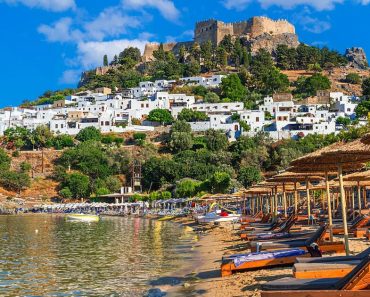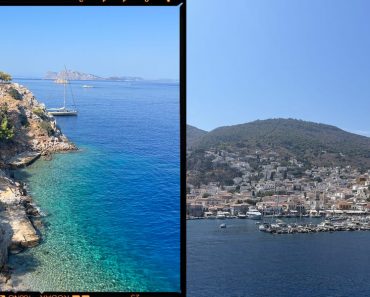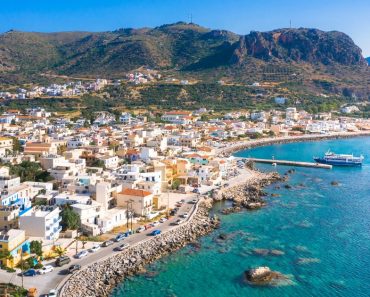Tuesday, May 13, 2025
Overtourism has reached critical levels across Europe, with destinations like Zakynthos in Greece and popular hotspots in Spain, France, Italy, Portugal, the Netherlands, and Romania experiencing overwhelming visitor numbers. New data reveals that these locations are facing an unsustainable surge in tourism, driven by post-pandemic travel demand, affordable short-haul flights, and the seasonal concentration of holidaymakers. This intense pressure is straining local infrastructure, inflating housing costs, and sparking growing resistance from residents who fear their communities and environments are being irreparably damaged.
The Greek island of Zakynthos has emerged as the most overburdened travel destination in Europe, according to new research that underscores mounting concern over the negative impacts of mass tourism across the continent. As holidaymakers continue to flock to Europe’s picturesque coastlines and historic cities, an alarming surge in visitor numbers is putting unprecedented pressure on local communities, infrastructure, and the environment.
The findings, published by consumer advocacy group Which?, rely on comprehensive tourism data from the European Commission, which evaluates overtourism through three key indicators: the number of tourists per resident (known as “tourism pressure”), the total number of overnight stays, and the density of those overnight stays per square kilometre.
Zakynthos: Ground Zero for Overtourism in Europe
Topping the list is Zakynthos, a popular island in the Ionian Sea off Greece’s western coast. Known for its turquoise waters and iconic Navagio Beach, also called Shipwreck Beach, the island attracted a staggering six million overnight stays in 2023, despite having a resident population of just 40,000. This translates to an overwhelming average of 150 overnight stays per local resident—a figure that highlights the disproportionate burden carried by the island’s limited infrastructure and services.
Zakynthos, also commonly referred to as Zante, has long been a favourite for sun-seekers from across Europe, particularly the United Kingdom. Most of the tourism is concentrated along the southern coast, where resorts continue to expand. However, the relentless influx of tourists is now prompting resistance from locals who are increasingly vocal about the resulting congestion, pollution, inflated rental prices, and degradation of the island’s fragile natural ecosystem.
Anti-Tourism Sentiment Spreads Across Europe
The warning signs are not limited to Greece. Last summer, a wave of anti-tourism protests swept across multiple European countries, including Spain, Italy, Portugal, and the Netherlands. Demonstrations erupted in cities and coastal towns where residents accused authorities of prioritising tourist revenue over community welfare.
In Spain, major destinations like Barcelona and Palma de Mallorca witnessed large-scale rallies, with demonstrators holding signs urging tourists to “go home.” Similar scenes unfolded in Athens, Venice, Amsterdam, and Lisbon. This growing frustration is rooted in common concerns—rising housing costs, the disappearance of affordable rental properties, gentrification of neighbourhoods, and environmental degradation caused by overcrowding.
With the peak 2025 summer season approaching, several local movements are threatening further mobilisations. Activist groups argue that their communities are at breaking point and warn that unchecked tourism could irreversibly damage their way of life.
Comparing Tourism Pressure Across Europe
While Zakynthos may rank highest in terms of tourist pressure per capita, other European destinations also face significant overtourism challenges. For example, Majorca, another island hotspot in the Mediterranean, recorded an extraordinary fifty-one million overnight stays in 2023. With a resident population of just under one million, this equates to more than fifty overnight stays per person annually.
Paris, by contrast, registered approximately forty-four million overnight stays last year. However, the French capital’s larger population—around 2.1 million—helps absorb the visitor load more evenly. Moreover, Paris tends to attract tourists for shorter stays compared to island destinations, where visitors often stay for a week or longer.
When measuring tourist density by geography, Paris topped the list for the highest number of overnight stays per square kilometre, followed closely by Athens and Copenhagen. This intense concentration of visitors in relatively small urban areas raises concerns about the sustainability of city infrastructure, public transport systems, and cultural sites.
Destinations with Low Tourism Pressure
Not all European regions are feeling the strain of mass tourism. Some destinations remain relatively untouched by the crowds. For instance, Lille in northern France had just two overnight stays per resident in 2023, placing it among the least affected locations in Europe. Similarly, Teleorman in southern Romania recorded only twenty overnight stays per 1,000 residents from British travellers last year, reflecting its status as a lesser-known and less commercialised area.
In Spain, while Malaga and Alicante face mounting density—reporting 17,493 and 5,501 overnight stays per square kilometre respectively—Murcia offers a stark contrast. As the least-visited part of Spain’s Mediterranean coastline, Murcia had only 486 overnight stays per square kilometre in 2023, making it a potential refuge for tourists seeking a quieter experience.
Rethinking Tourism Strategy in Europe
The growing backlash against overtourism has forced many European governments and local councils to reconsider their tourism strategies. Measures being explored or implemented include caps on daily visitor numbers, bans on short-term holiday rentals in certain districts, higher tourism taxes, and seasonal restrictions on cruise ship arrivals.
Some cities are also promoting alternative travel seasons or encouraging tourists to explore less-visited areas to ease the burden on overcrowded hubs. For example, Italy is promoting rural tourism in regions like Umbria and Basilicata, while Greece is urging visitors to explore inland villages and off-peak seasons.
Meanwhile, public discourse around the ethics and sustainability of travel is gaining traction. Travellers are increasingly being urged to adopt more responsible behaviours—such as supporting local businesses, reducing waste, and choosing eco-conscious accommodations.
Overtourism is overwhelming major European destinations, with Zakynthos in Greece and cities across Spain, France, Italy, Portugal, the Netherlands, and Romania facing intense strain. Rising visitor numbers are fueling housing issues, environmental stress, and growing local backlash.
Looking Ahead
The European travel landscape is clearly at a turning point. As destinations like Zakynthos grapple with the unintended consequences of mass tourism, the need for a more balanced and sustainable approach has never been more urgent. The challenge lies in maintaining the economic benefits of tourism—on which many local economies heavily depend—while protecting the environment, culture, and quality of life for residents.
With the summer season fast approaching and tourism numbers showing no signs of slowing, both travellers and policymakers must work together to ensure that Europe’s most beloved destinations do not become victims of their own popularity.







